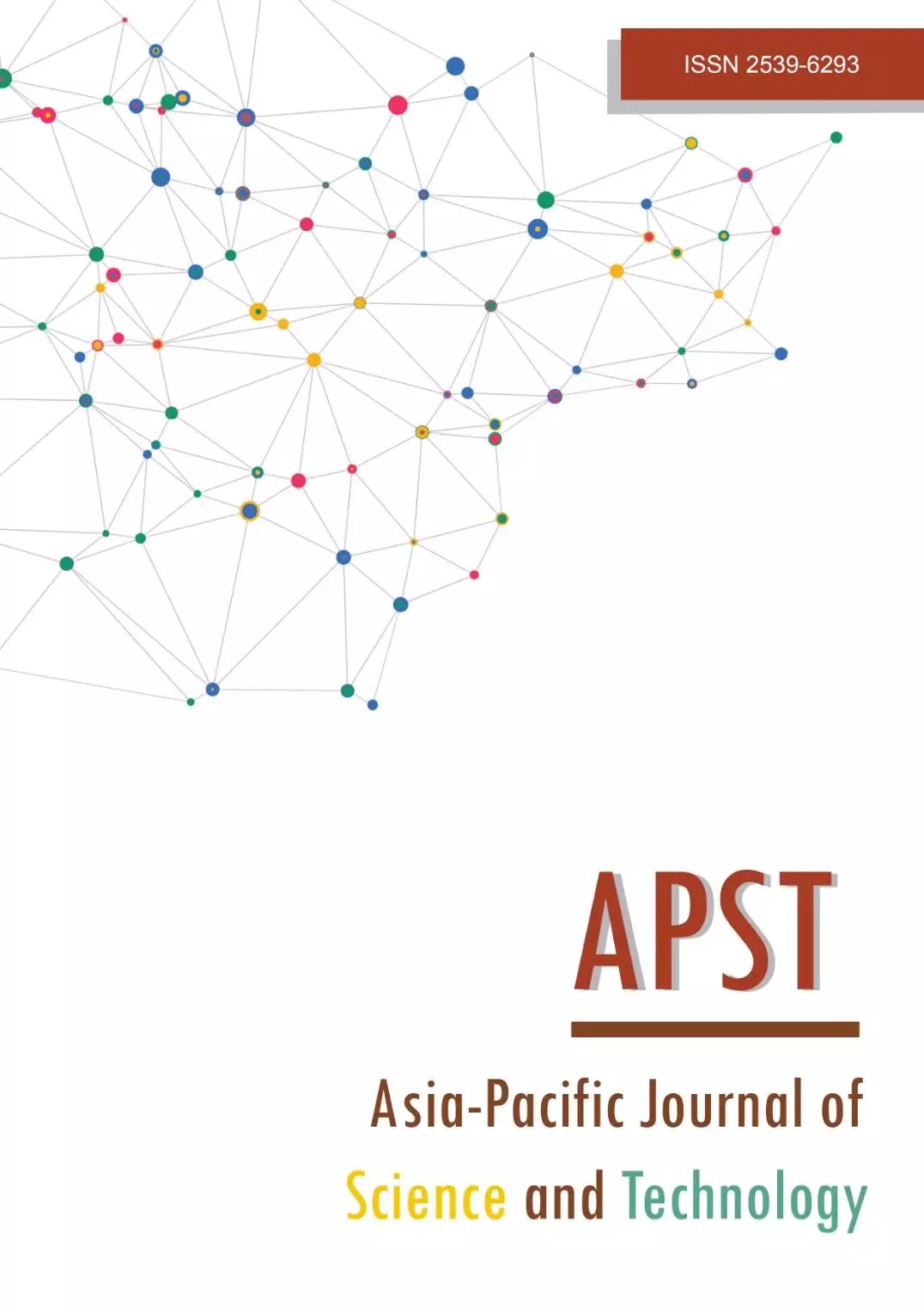Recombinase polymerase amplification for human male determination from semen
Main Article Content
Abstract
Recombinase polymerase amplification (RPA) is a simple, rapid, highly effective, specific, and sensitive technique used for amplification of specific DNA regions at a constant, low temperature (between 37 °C and 42 °C) without using a thermal cycler. The RPA products can be detected using agarose gel electrophoresis. This research developed primers specific to the SRY (sex-determining region Y) gene in RPA assay. RPA primers were designed using parameters according to the instruction manual (TwistDx™) and Primer-BLAST software based on the human SRY gene (accession number: JQ811934.1) obtained from the GenBank database. The designed primers were further tested using RPA at 39 °C for 20 min. The results revealed that the set of developed RPA primers could detect all male DNA from human semen samples. Sensitivity analysis showed that the detection limit was determined to be 0.01 ng for template DNA. Therefore, the RPA primers designed in this research are an alternative valuable tool for sex determination as a part of biological evidence in forensic casework.
Article Details

This work is licensed under a Creative Commons Attribution-NonCommercial-NoDerivatives 4.0 International License.
References
Wurmb-Schwark NV, Bosinski H, Timme RS. What do the X and Y chromosomes tell us about sex and gender in forensic case analysis? J Forensic Leg Med. 2007;14(1):27-30.
Tozzo P, Giuliodori A, Corato S, et al. Deletion of amelogenin Y-locus in forensics: literature revision and description of a novel method for sex confirmation. J Forensic Leg Med. 2013;20(5):387-391.
Butler E, Li R. Genetic markers for sex identification in forensic DNA analysis. J Forensic Investig. 2014;2(3):1-10.
Deng H, Gao Z. Bioanalytical applications of isothermal nucleic acid amplification techniques. Anal Chim Acta. 2015;853:30-45.
Yan L, Zhou J, Zheng Y, Gamson AS, Roembke BT, Nakayama S, et al. Isothermal amplified detection of DNA and RNA. Mol Biosyst. 2014;10(5):970-1003.
Zhao Y, Chen F, Li Q, Wang L, Fan C. Isothermal amplification of nucleic acids. Chem Rev 2015;115(22): 12491-12545.
Qi H, Yue S, Bi S, Ding C, Song W. Isothermal exponential amplification techniques: from basic principles to applications in electrochemical biosensors. Biosens Bioelectron. 2018;110:207-217.
Nieuwkerk DM, Korajkic A, Valdespino EL, Hermann MP, Harwood VJ. Critical review of methods for isothermal amplification of nucleic acids for environmental analysis. J Microbiol Methods. 2020;179:106099.
Glökler J, Lim TS, Ida J, Frohme M. Isothermal amplifications – a comprehensive review on current methods. Crit Rev Biochem Mol Biol. 2021;56(6):543-586.
Piepenburg O, Williams CH, Stemple DL, Armes NA. DNA detection using recombination proteins. PLoS Biol. 2006;4(7):e204.
Li J, Macdonald J, Stetten FV. Review: a comprehensive summary of a decade development of the recombinase polymerase amplification. Analyst. 2019;144(1):31-67.
Lobato IM, O’Sullivan CK. Recombinase polymerase amplification: basics, applications and recent advances. TrAC Trends Anal Chem. 2018;98:19-35.
Kanchanaphum P. Time course of detection of human male DNA from stained blood sample on various surfaces by loop mediated isothermal amplification and polymerase chain reaction. Biomed Res Int. 2018; 8;2018:2981862.
Gao W, Huang H, Zhang Y, Zhu P, Yan X, Fan J, et al. Recombinase polymerase amplification-based assay for rapid detection of Listeria monocytogenes in food samples. Food Anal Methods. 2017;10(6):1972-1981.
Zhao W, Chi Y, Ye M, Wang T, Zu AM, Qi RD. Development and application of recombinase polymerase amplification assay for detection of Bipolaris sorokiniana. Crop Prot. 2021;145(1):105619.
Cabada MM, Malaga JL, Gonzalez CA, Bagwell KA, Naeger PA, Roger HK, et al. Recombinase polymerase amplification compared to real-time polymerase chain reaction test for the detection of Fasciola hepatica in Human Stool. Am J Trop Med Hyg. 2017;96(2):341-346.
Tu PA, Shiu JS, Hwae LS, Pang VF, Wang DC, Wang PH. Development of a recombinase polymerase amplification lateral flow dipstick (RPA-LFD) for the field diagnosis of caprine arthritis-encephalitis virus (CAEV) infection. J Virol Methods. 2017;243(Pt 8):98-104.
Donoso A, Valenzuela S. In-field molecular diagnosis of plant pathogens: recent trends and future perspectives. Plant Pathol. 2018;67(7):1451-1461.
Wang J, Liu L, Li R, Wang J, Fu Q, Yuan W. Rapid and sensitive detection of canine parvovirus type 2 by recombinase polymerase amplification. Arch Virol. 2016;161(4):1015-1018.
Zou Y, Mason MG, Botella JR. Evaluation and improvement of isothermal amplification methods for point-of-need plant disease diagnostics. PLoS One. 2020;15(6)e0235216.
Kapoor R, Srivastava N, Kumar S, Saritha RK, Sharma SK, Jain RK, et al. Development of a recombinase polymerase amplification assay for the diagnosis of banana bunchy top virus in different banana cultivars. Arch Virol. 2017;162(2):2791-2796.
Kumar PV, Sharma SK, Rishi N, Ghosh K, Baranwal VK. An isothermal based recombinase polymerase amplification assay for rapid, sensitive and robust indexing of citrus yellow mosaic virus. Acta Virol 2018;62(1):104-108.


